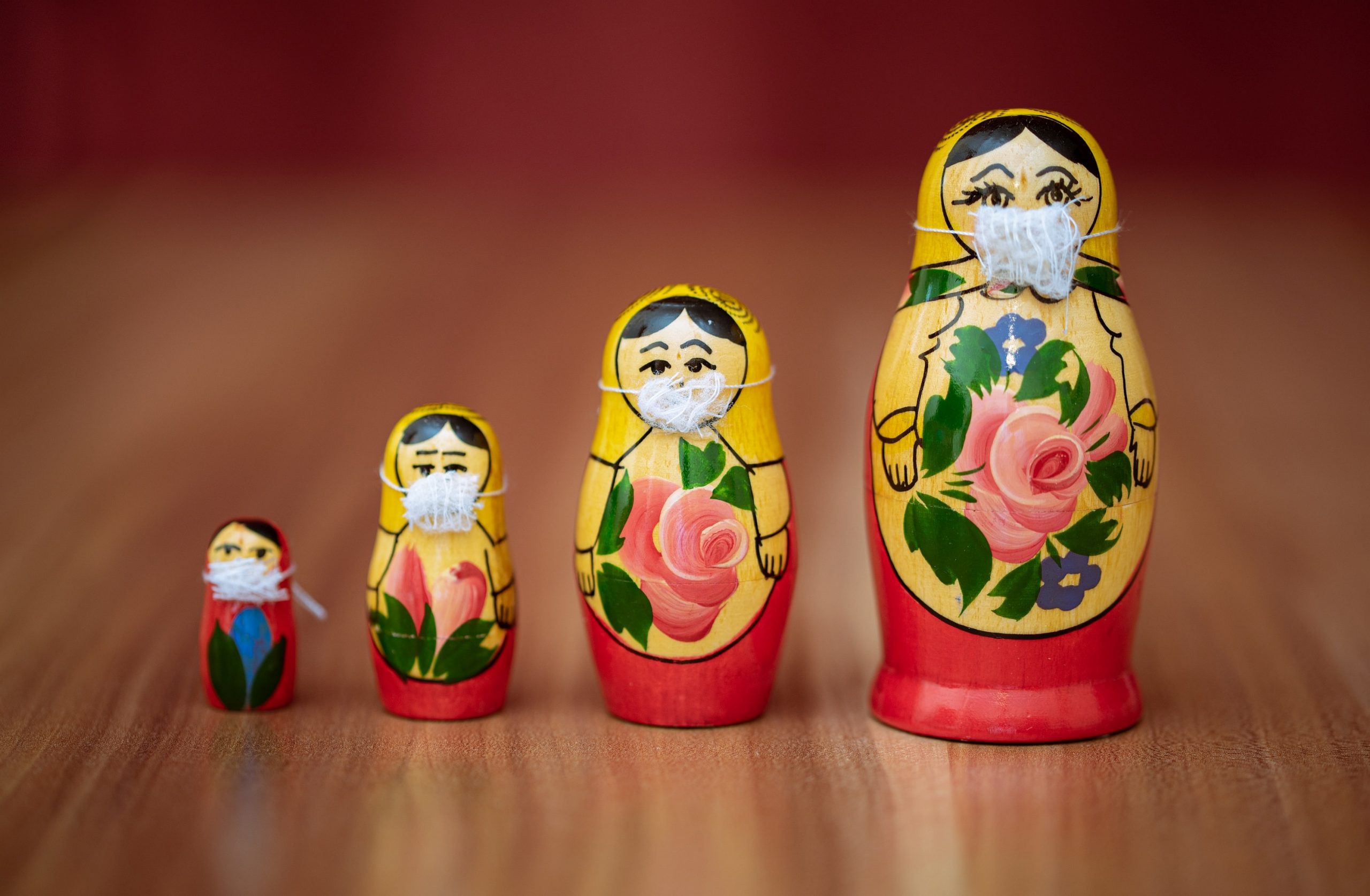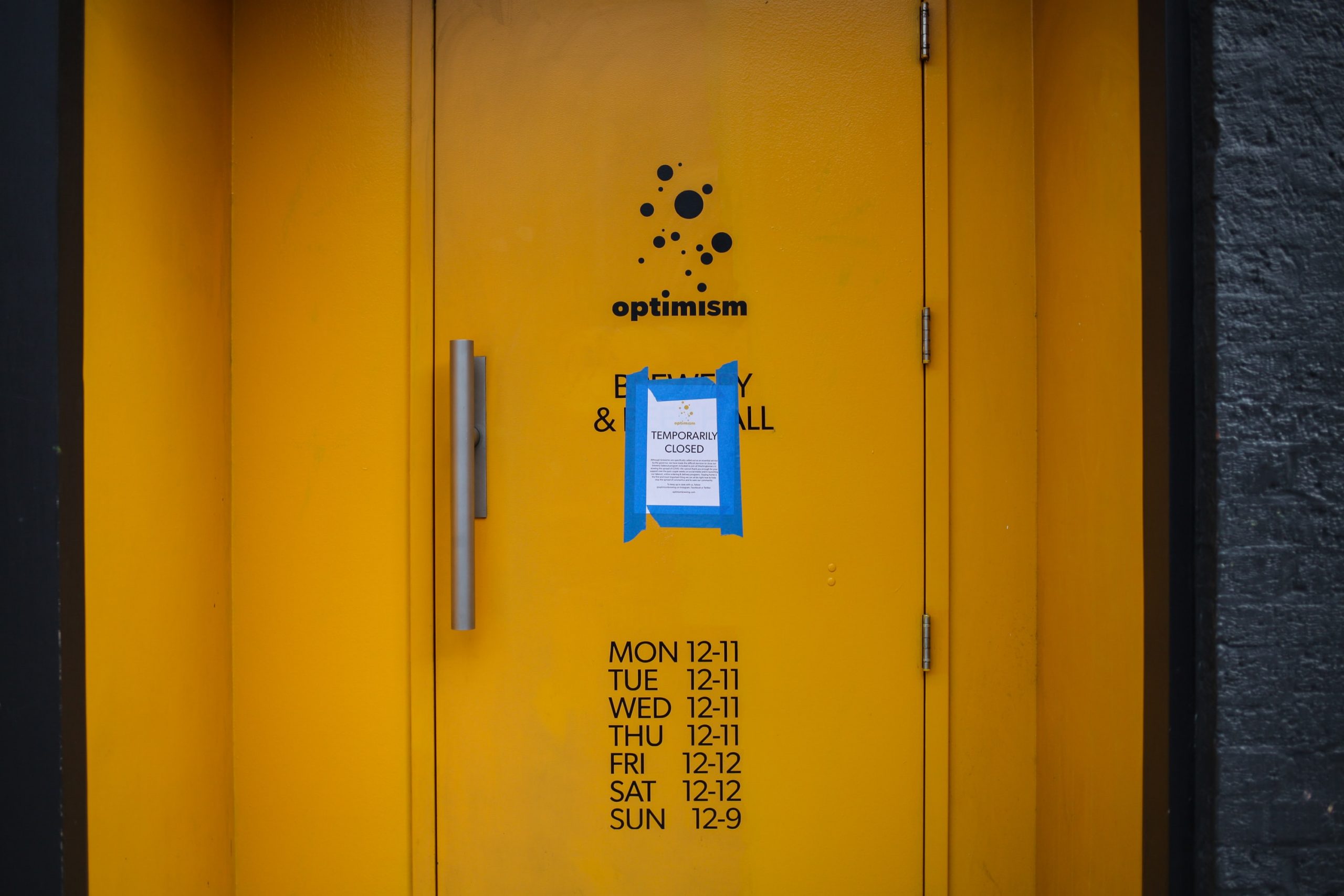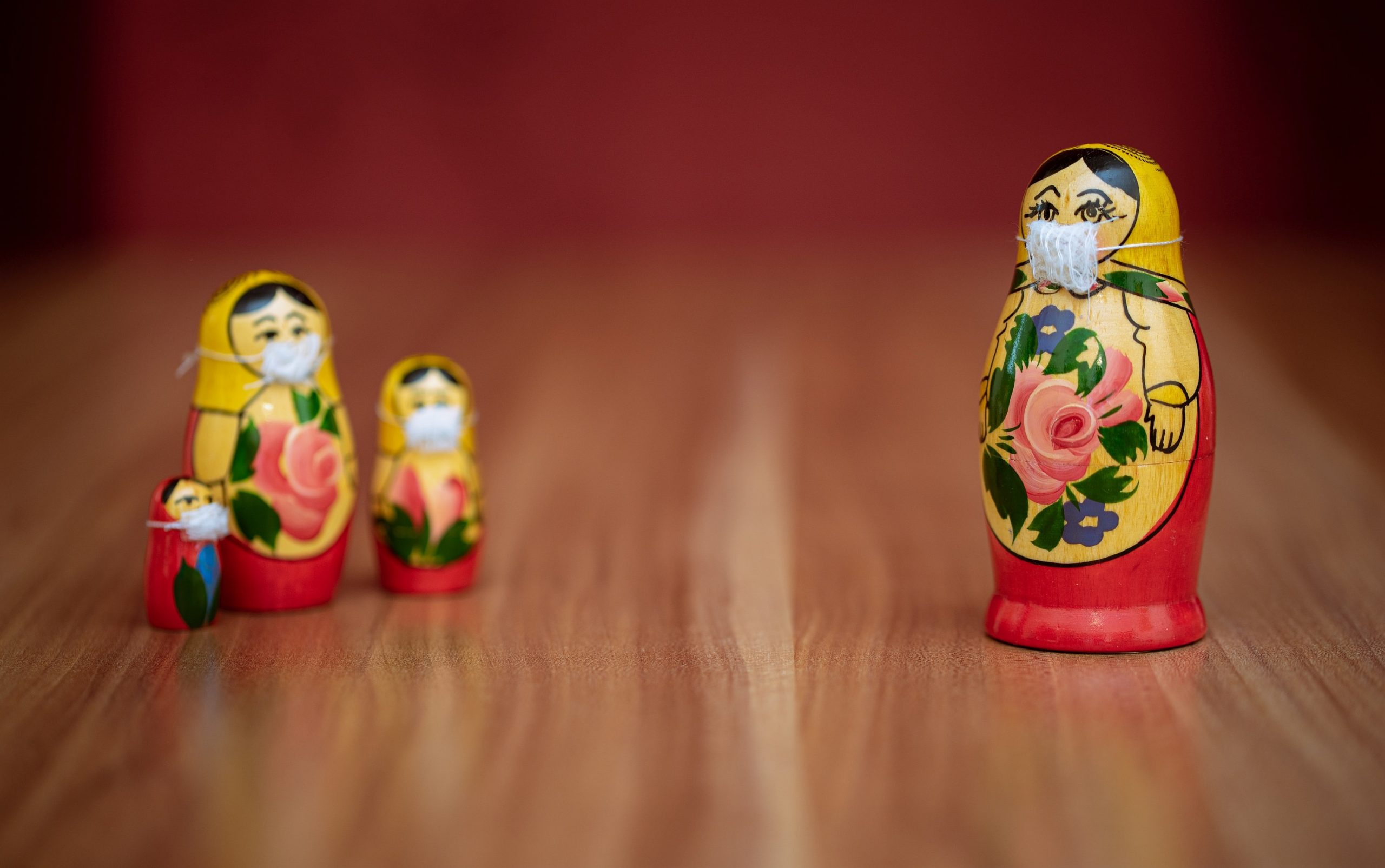In early March our two-year-old toddler’s life in New York City radically changed. No daycare, no bus and subway rides, no public library, no mochi in our favourite Japanese cafe. He wanted to know what had happened. He expressed his concerns through a few more wakeups at night, a stronger interest in stories that had a scary character, more hugs and cuddling, and one night the abstract, yet crystal-clear question: ‘Mama protects me, right?’

Matryoshkas being careful. Evgeni Tcherkasski on Unsplash.
Our solution over time was the idea of the ‘Big Clean Up.’ ‘Clean up, clean up, everybody, everywhere. Clean up, clean up, everybody, do your share’ — toddlers across the United States know this song; it has become part of their routine in daycare. This song presumes that mess is visible and can be easily managed with a little cooperation. (Who is going to tell them that most messes take a long time to fix, if ever?) We presented the coronavirus crisis to him as a moment when the world is taking its time for a proper reorganization — which also involves cleaning his beloved subway cars.
Inadequate solution, no doubt, but it made some characteristics of the coronavirus crisis more salient to me. We learn of many crises only from the media — from far-way earthquakes to spectacular child abductions to life-changing national election results. But in this case, the event, which is more of a process, is in our bodies, homes, communities and schools, and yet we cannot see it. On 9/11, when heartbroken New Yorkers looked out their windows, many of them saw ruins and dust. But during the months when the city was first hit by Covid-19, most New Yorkers did not ‘see’ anything. Only loud sirens, in an endless loop, offered a sensory connection.
Some of our inability to see is justified. The virus simply is unavailable to the human eye. In other cases, societies choose not to see. Much of the struggle in this pandemic is for visibility: for coronavirus deaths and health effects to be seen, for African American suffering to be shown, for the loss of life to be recognized and for our grief to be shared, when visitations to nursing homes are limited and even funerals happen on Zoom. We are publishing millions of images a day, yet we are scrambling to see this crisis.
We certainly have many illustrations of the crisis, in fact, billions of images, flooding to social and legacy media every day. But an illustration is different from a representation. A representation cannot resemble every detail of an event, but it comes to stand for it.As a symbolic condensation, it presents the ‘whole,’ even if it depicts only ‘parts.’ Just think about how the images of the burning towers on 9/11 came to stand for the event, even if they could not depict every moment of it.
In the case of the 2020 pandemic, we see the virus only in abstract and artistic representations. While the most famous image of the coronavirus, created by medical illustrators of the Centers for Disease Control and Prevention (CDC), represents some ‘objective markers’ of the virus, it also is the result of very conscious artistic decisions. Our motivating ‘flattening curve’ graph often does not even have names and numbers on its axes. The graph is complicated to comprehend, yet it does not live up to basic scientific standards.
Photographers have limited access to intensive care units, nursing homes, meat-packing plants, prisons, and many other ‘super-spreader’ sites of the crisis. And even if somebody catches the virus, beyond showing people on ventilators, how can we even depict the victims’ prolonged, multiorgan suffering?
So much of this crisis offers profound representational challenges. We cannot see this crisis, so we struggle to relate to it. It is perplexing to watch the passionate debates around mask wearing and other simple rules that could get us through this challenging time. But the debates are so passionate because not even the existence of the so-called enemy is clear to the human eye.
Even if we ‘see’ something, like an earthquake or the speech of a political leader, we interpret it differently. In this case, we cannot even agree on the looks of the ‘enemy’ — no wonder some do not believe it exists, while others imagine the fight against it in radically different ways. Personal sense of risk, differing political stances, family histories, and social and community circumstances will define actions against this invisible threat, especially in lieu of a clear federal response.

Optimism is temporarily closed. Seattle, USA. Photo by Nick Bolton on Unsplash.
When media researchers Daniel Dayan and Elihu Katz defined media events in 1992, they thought of preplanned happenings, like the wedding of Princess Diana and Prince Charles and the JFK funeral, that professional journalists broadcast live on television and narrate with reverence to bring societies together, at least momentarily.
In order to have a preplanned broadcast event, you need to know the beginning and the end of an event, its location, and its dominant frame. The 2020 pandemic is happening almost everywhere in the world, in radically different yet somewhat similar ways. Its meanings are highly dependent on local contexts. In some countries, the dominant frame is dysfunctional governance, in others it is xenophobia, yet another context offers a story about the advantages of having a scientifically trained expert as political leader.
The pandemic is still happening, it is coming in hard-to-define waves, and without a foreseeable end. And, even if there is ultimately an end, it might be messy. As historians of epidemics have warned, we tend to think of pandemics in military terms, expecting a final battle of Waterloo. But the end can take years or even decades, and often it is unclear who can call a pandemic’s end.
Yet, this still unfolding pandemic collapses powerful visual and mental imaginaries. Not just my toddler’s imaginary was lost from one moment to the next in early 2020. Recent generations grew up with the commercial message that the globe is ours to explore, whether this dream was available to everyone or not. Now, all of us seduced by globalization and its theories suddenly have become more local than we would have ever imagined. Far-away places are now only brought to us by images, and even so, not in their familiar form.
Of course, limitations on movement were the core experience of millions internationally well before this crisis. Refugees forced into unlivable camps or those trying to climb the ever-higher fences of the European Union never experienced ‘globalization’ as a form of freedom. The ‘wall’ as metaphor replaced the ‘bridge’ in globalization discourse a long time ago. Still, it is hard to debate that an airplane-based and movement-centred post-1989 imagination of the world is currently inaccessible. Even if it ultimately comes back, some of the anxiety may remain with us. Will I ever again get on an airplane without a mask? I don’t know!
The ‘Big Clean Up’ is ongoing, confusing, and while as a threat it connects the world, it also profoundly divides it. New walls have emerged with the speed of light, grandparents in many parts of the world cannot visit their grandkids safely, school closures bring educational challenges and some school openings threaten lives.
The United States, at the time I’m writing, has 194,000 coronavirus deaths, around 65 times the death toll of the 9/11 attacks. Hundreds of thousands of Americans will have prolonged health effects, even if they survive exposure. It is unclear when my toddler can safely take a subway ride again, go to a museum, or see his international extended family.

Matryoshkas socially distancing. Evgeni Tcherkasski on Unsplash.
The 2020 pandemic is a crisis in many distinct ways. But it is certainly a profound representational crisis. Our inability to see this mediated crisis while being flooded by images is a powerful contradiction we need to face. So, we search for names, like we did with the ‘Big Clean Up’ for our toddler, to pin down a bounded ‘event’ in an ongoing process, and to tame the immense anxiety and uncertainty that came with it. Naming and visually capturing are ultimately desperate attempts to overcome the representational challenges this crisis presents. Only through better seeing together can we ultimately act together.
This essay was originally published in Items: Insights from the Social Sciences on September 17, 2020 as part of the series ‘Covid-19 and the Social Sciences.’ Reprinted with permission. Items is a digital publication of the Social Science Research Council (SSRC).

















